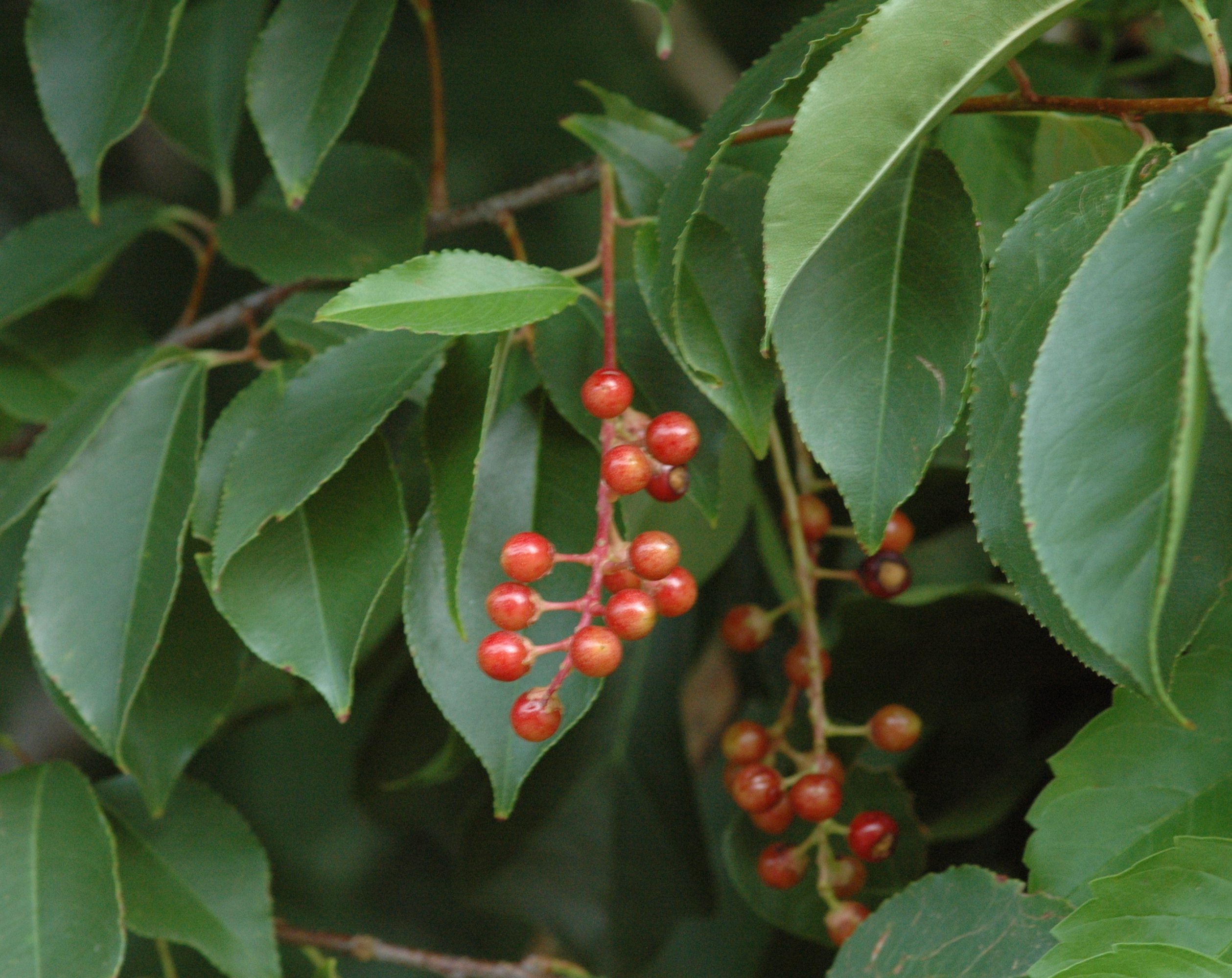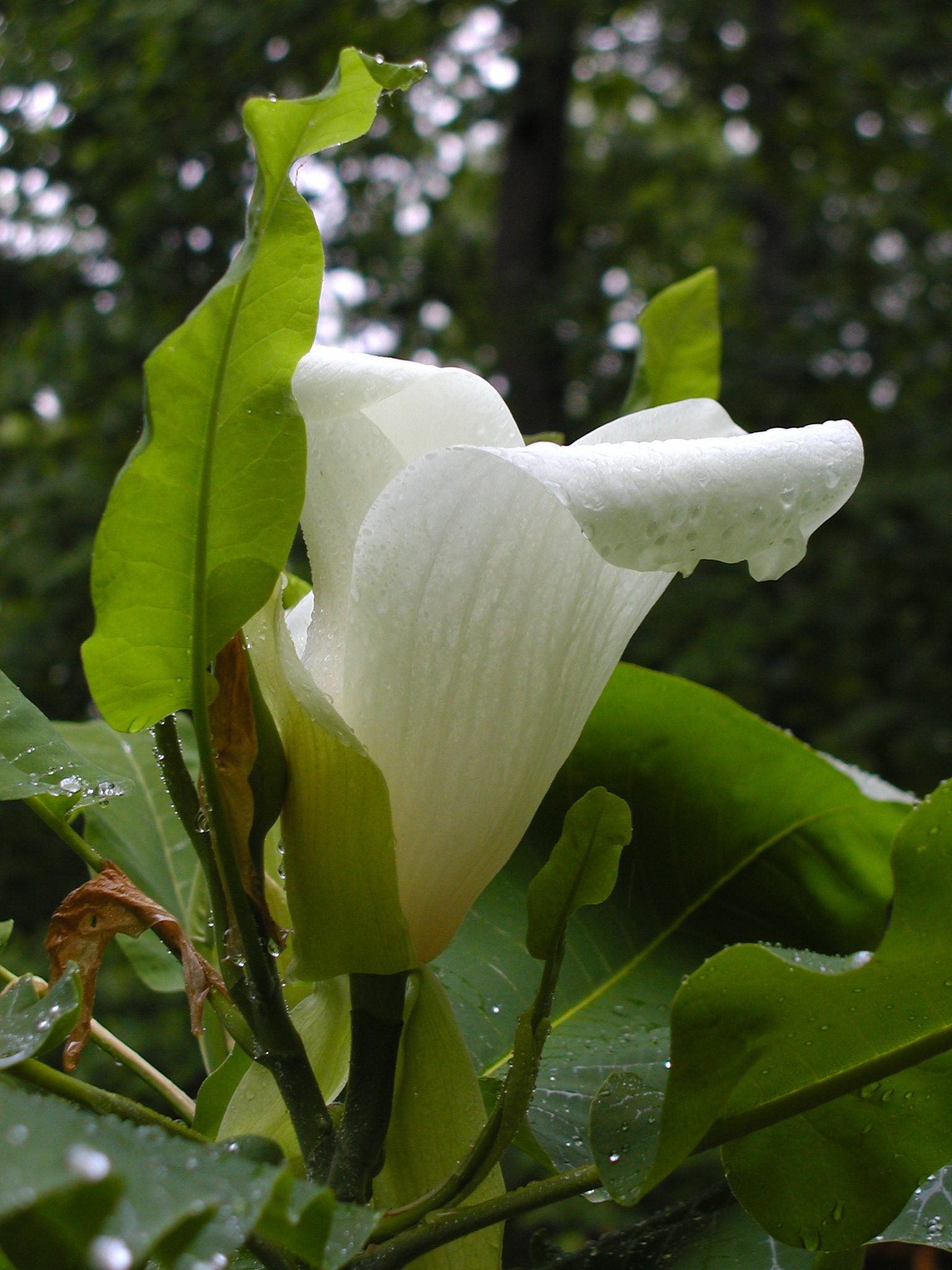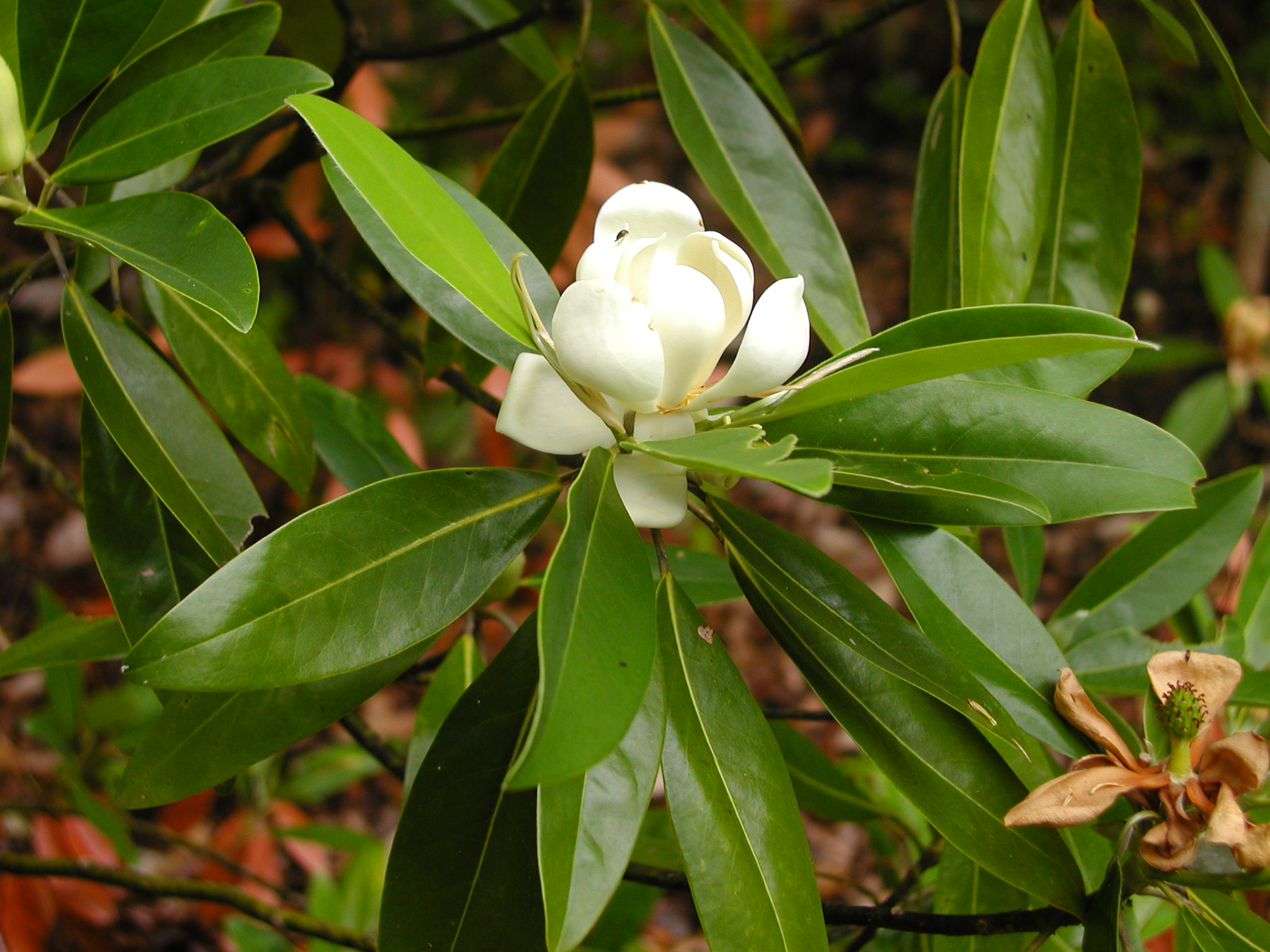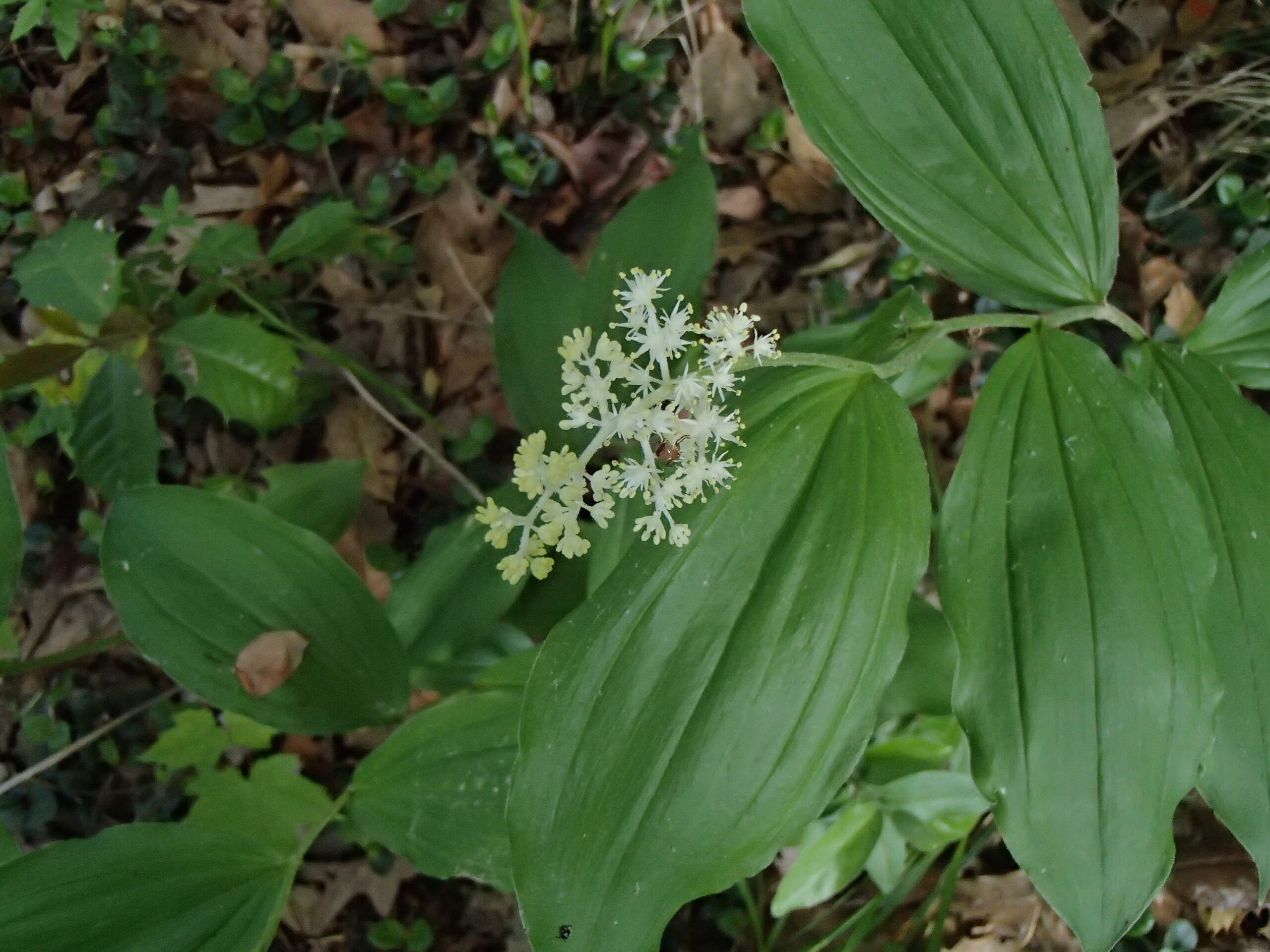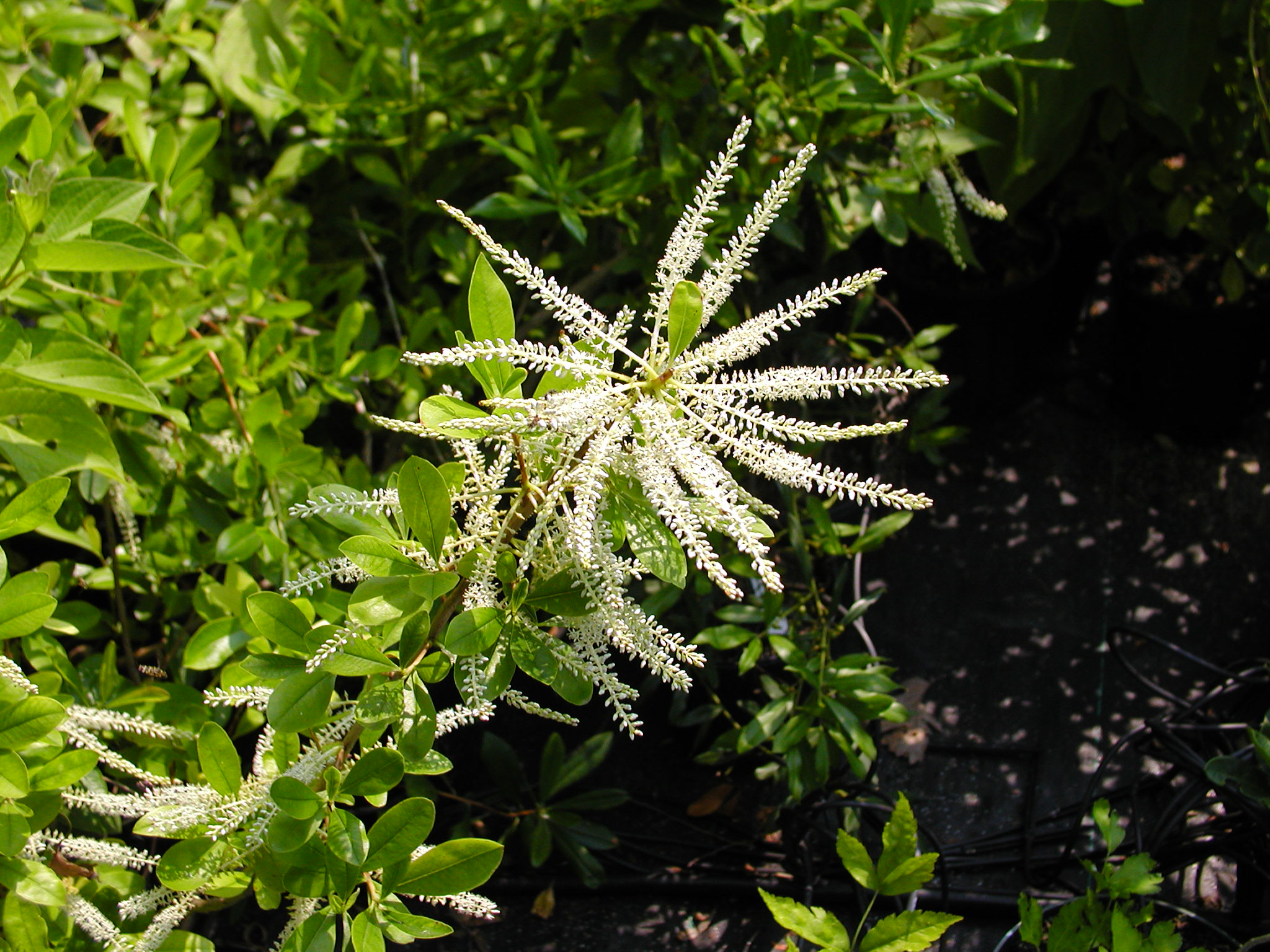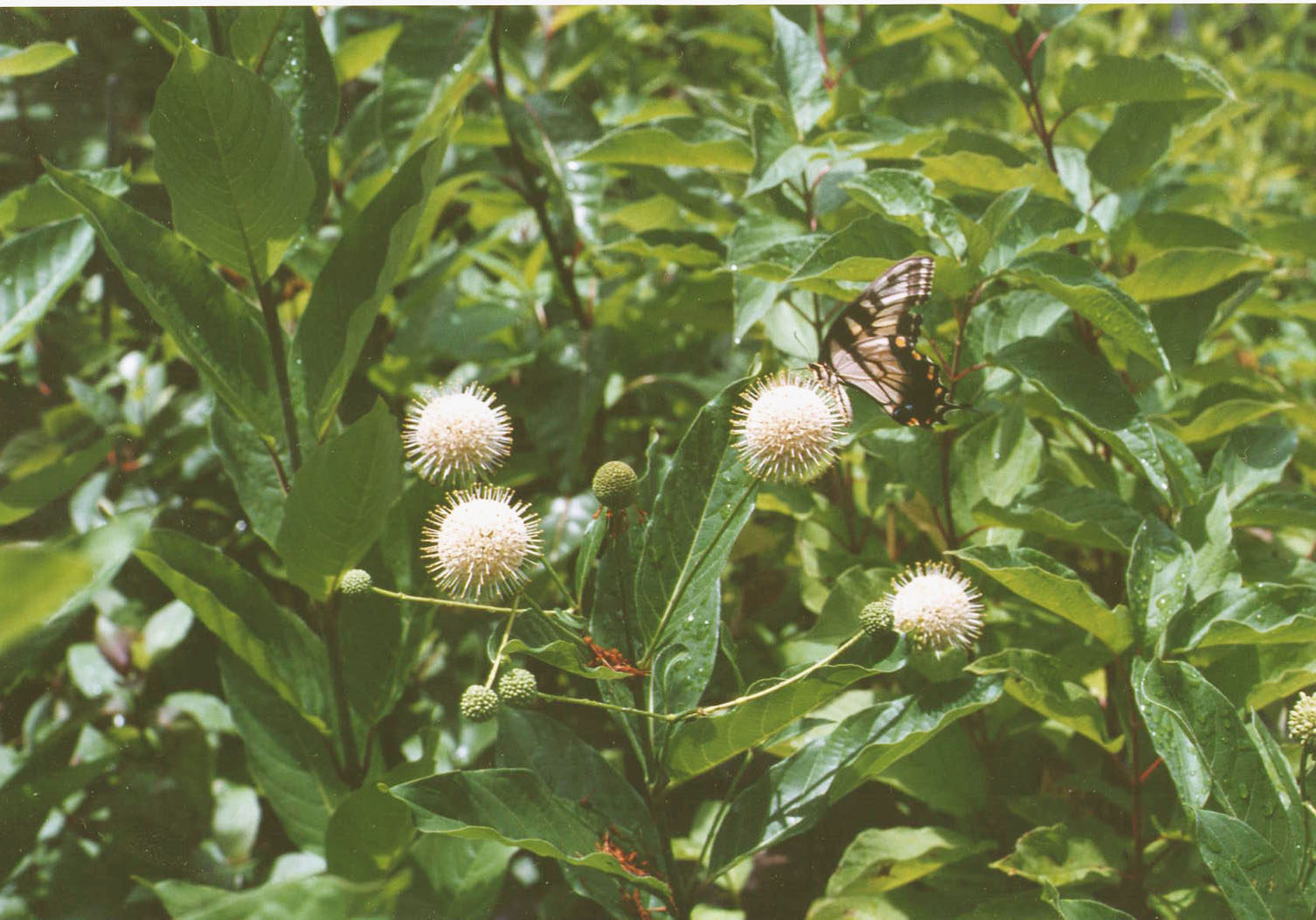NURSERY HOURS
Wednesday: 10-4 Thursday: 10-6 Friday-Saturday: 10-4 Sunday: 12-4
November 14, 2021
Prunus serotina
The Black cherry is an important southern tree for both wild life and commercially. Young black cherries tend to have a conical crown but when given enough room, the mature trees develop long limbs and arching branches giving it an oval shaped crown. The Black cherry’s fall foliage is a golden…
August 2, 2021
Aronia prunifolia
Aronia prunifolia or Purple Chokeberry is a natural hybrid between A. arbutifolia (Red Chokeberry), and A. melanocarpa (Black Chokeberry), a more mountainous species. All three Chokeberries have very diferent distribution maps. Purple Chokeberry is much less abundant than the Red Chokeberry. It is much like Red Chokeberry in habit, that is,…
April 29, 2019
Hibiscus coccineus
Although Scarlet Rosemallow in nature grows in wet places (the Wetland Indicator Status is “Obligate”), this herbaceous perennial thrives in upland gardens, and should be invited to do so! Adjectives such as “statuesque” and “architectural” come to mind. If given a sufficiently large sunny space, Rosemallow will express its full natural…
February 28, 2019
Viburnum rafinesqueanum
This Viburnum — with its showy, flat-topped or domed white flowers and opposite, toothed leaves typical of Viburnums — stands out from its cousins because in addition to being handsome, it is a well behaved, small (6-foot) shrub that plays well with others. Two of them have volunteered on our property…
February 28, 2019
Viburnum dentatum
Southern Arrowwood is a dense, 8-10-foot shrub native to Eastern U.S. It is composed of many upright, spreading, straight stems and bears typical-Viburnum 3-inch, flat-topped corymbs of small creamy white flowers followed in mid-summer by blue-black seeds which generously support a range of birds and other animals. It is so useful…
February 28, 2019
Viburnum nudum
Possumhaw Viburnum is a 12-15-foot tall (some report up to 20 feet) x 12-15-foot wide, deciduous, wet-tolerant shrub of surprising ornamental value found in Eastern states from Texas north to Canada. It ioccurs in all three NC zones, mountains, piedmont and coastal plain, though in the mountains the quite similar Viburnum…
February 28, 2019
Viburnum opulus
This plant is not currently for sale. This is an archive page preserved for informational use. Cranberrybush Viburnum or Highbush Cranberry is a dense, arching, deciduous shrub six to ten feet (or even taller) native all across Canada and our northern states down as far as a couple of counties…
February 28, 2019
Viburnum prunifolium
Smooth Blackhaw, native to much of mid-latitude Eastern and central U.S., is a large deciduous shrub or small tree which usually grows to around 15 feet tall and wide, but if grown as a single-stemmed tree form, it can reach up to 30 feet. It thrives in full sun to part…
February 28, 2019
Symphoricarpos orbiculatus
Coralberry is a very showy colonial shrub native in the eastern and central United States, as well as central Canada (Ontario) and northeastern Mexico. It reaches 4+ feet, with smooth, opposite, dull green, oval-shaped leaves and shreddy bark. Greenish white flowers are tucked under the leaves in early summer, developing later…
February 28, 2019
Taxodium ascendens
Pond Cypress is a deciduous conifer of our Southeastern states which roughly resembles (and is considered by some to be a variety of) Taxodium distichum, or Bald Cypress (See our entry for T. distichum). There are similarities between the two, such as their amazing soil moisture adaptability from standing water to…
February 28, 2019
Taxodium distichum
Bald Cypress is a stately and long-lived deciduous conifer found throughout the swamps and riparian areas of the southeast, famous for its knobby “knees” and flared or buttressed trunks. It is important for most of us non-swamp dwellers, though, because Bald Cypress can also thrive in well drained upland soils. Since…
February 28, 2019
Vaccinium arboreum
This plant is not currently for sale. This is an archive page preserved for informational use. Sparkleberry or (Farkleberry) is an attractive, tough, underused woodland shrub usually eight to ten feet in height, though occasuinally it takes on a tree form. It is found in dry woods and open forests from…
September 17, 2018
Sambucus canadensis (synonym Sambucus nigra ssp. canadensis)
Elderberry is a vigorous, beautiful shrub commonly observed on roadsides and in hedgerows and disturbed areas in most NC counties and most states as well. It is a a vigorous grower, 5-12′ in height and spread, with arching branches which support numerous flat-topped white flower clusters in mid-summer. These retain their…
September 17, 2018
Mitchella repens
Partridgeberry is a beautiful, trailing, evergreen, mat-forming woody vine, no taller than two inches, reported in all states of eastern North America, and thriving in our piedmont Oak Hickory forest understory. Its leaves are rounded, paired, rich dark green with white markings, 1/2 to 3/4-inch long. Its tiny white, fragrant, tubular…
September 17, 2018
Oxydendrum arboreum
Sourwood is a small to medium (30-70’) deciduous, understory tree found throughout the Carolinas in mixed hardwood forests It is the only member of its genus (Oxydendrum) and has no known subspecies, varieties or forms. It is in the Ericaceae family, and its closest relatives are in the genera Pieris and…
September 17, 2018
Passiflora incarnata
Purple Passion Flower is an attractive, fast -growing perennial vine reported to occur in most counties of NC and in most Southeastern states. Climbing by means of axillary tendrils, it grows to 12 feet (some say up to 25 feet, but we have not seen that) and is naturally found in…
September 17, 2018
Juniperus virginiana ‘Blue Arrow’
‘Blue Arrow’ is a cultivar of Eastern Red Cedar, an evergreen tree of wide variability in form, seen on roadsides and hedgerows throughout the eastern U.S. ‘Blue Arrow’ was selected to provide a reliable, vertical evergreen accent in a more formal landscape. Red Cedar (the species) is dioecious, with seed cones…
September 17, 2018
Magnolia ashei
Ashe’s Magnolia is a greatly underused, rare in cultivation, extremely ornamental small tree endemic to mixed hardwood forests and ravine slopes in a few counties in the “armpit” or panhandle of Florida. It is easily recognized by it’s very large leaf size, one to two feet long by six inches to…
September 17, 2018
Magnolia virginiana
Magnolia virginiana, or Sweetbay Magnolia, is a small tree or shrub at home in the Atlantic and Gulf Coastal Plains and piedmont as far north as New York.. With 3- to 5-inch, oval, leathery green leaves with silvery undersides, and beautiful, sweetly-scented, small (3″ wide) ivory flowers in spring and summer,…
September 17, 2018
Maianthemum racemosum
Solomon’s Plume is a widespread perennial, reported in all of the U.S. mainland states, but conspicuously almost entirely absent from the coastal plain from NC down to Florida and over to Texas and throughout the great plains. It is abundant here in the piedmont, with gracefully arching, unbranched stems reaching up…
September 17, 2018
Ilex vomitoria ‘Taylor’s Rudolph’
‘Taylor’s Rudolph’ is a cultivar of a beautiful and hardy native species of Holly that grows in coastal NC as well as other Southeastern states. Both ‘Taylor’s Rudolph’ and the species are evergreen; both are very adaptable, thriving in a range of cultural conditions from moist to dry, in full sun…
September 17, 2018
Juniperus virginiana
Eastern Red Cedar is a sturdy, aromatic, evergreen, pyramid-shaped or columnar tree which usually grows to about 60 feet, though it can reach 90 feet. This species is considered a pioneer tree that colonizes sunny areas that are relatively dry and sterile. Adapted to dry habitats, it is native throughout central…
September 17, 2018
Clematis viorna
Leatherflower, described by Carl Linnaeus in 1753, is a belle of the Southeast. This slender, herbaceous perennial vine is valued for its sheer delicate beauty. The nodding, reddish-purple, bell-shaped flowers are thickly textured and the rosy, recurved petals are cream-colored at the tips and inside. But they do more — the…
September 17, 2018
Cornus amomum
Silky Dogwood is a hardy, spreading shrub that grows in moist habitats, mostly by stream banks and wet lowlands in the eastern U.S. While attractive, its ability to draw wildlife to it is also a very strong attribute. It is a medium-size shrub, growing up to ten feet tall and wide,…
September 17, 2018
Corylus americana
American Hazelnut is a medium-sized, deciduous shrub found in moist to dry-mesic woodlands throughout Eastern North America. It is notably absent in the deep South. In North Carolina it is reported only in piedmont and mountain counties. This shrub is valued for its sweet nuts, which are edible either raw or…
September 17, 2018
Cyrilla racemiflora
Swamp Titi is an extremely interesting and underused shrub or small tree for our area. It grows to perhaps 20 feet (more often 12-15 feet) and can be described as having both lustrous evergreen or tardily deciduous leaves and colorful fall foliage! Its trunk(s) and branches are very nicely contorted, with…
September 17, 2018
Euonymus americanus
Strawberrybush, or Hearts-a-Bustin’, is a unique, rhizomatous shrub with an unusual form that occurs in shady woodlands throughout the Southeast to Eastern Texas. Plants are 4-6 feet tall and multi-stemmed. The individual shoots are pencil-like and green with little branching. Leaves are long (~2 inches), opposite, and lance-shaped, colorful in fall.…
September 17, 2018
Cephalanthus occidentalis
Buttonbush is an open, woody, deciduous shrub usually 5-8′ tall (sometimes taller), with an irregular crown graced with many white, golf ball-sized, spherical flower clusters in June. The shrub is very ornamental, and the white, long lasting, pin-cushion like flowers are more often than not being visited by enthusiastic butterflies and/or…
September 17, 2018
Cladrastis kentukea
In North Carolina, Yellowwood is found only in a few of our western-most counties bordering Tennessee, and is among the rarest of our native trees. It is thirty to fifty feet high and nearly that wide at maturity and is prized as an ornamental for its form, for its smooth, Beech-like…
September 17, 2018
Aesculus parviflora
Although not actually native to NC (it naturally occurs in mid-Alabama), Bottlebrush Buckeye is a favorite shrub in our area because of its show-stopping, 8-12-inch tall panicles of white, feathery flowers with prominent reddish anthers and pinkish filaments. These attract numerous butterflies and other pollinators in early summer and then are…
September 17, 2018
Aesculus pavia
Aesculus pavia or Red Buckeye is a deciduous, clump-forming shrub or small tree (ten to fifteen feet) native to the Southeast from Virginia over to Texas and Oklahoma. In NC it is found in central Piedmont and southern Coastal counties. This shrub has much to offer in the mesic garden: its…
September 17, 2018
Aesculus sylvatica
Aesculus sylvatica, or Painted Buckeye, is a shrub about 6 feet tall commonly observed along streams and on open forest slopes of the Piedmont counties of NC and other Southeastern states. Painted Buckeye’s appeal lies in the variety of subtle colors displayed by the tender leaves as they emerge in an…
September 17, 2018
Amelanchier canadensis
The Shadblow Serviceberry is a large shrub in the Rose family native to moist woods in the Eastern seabord of the U.S. and up into Canada. In NC it is found in counties of the lower Piedmont and Coastal plain. Serviceberry is beloved by native plant lovers for its many fine…
September 17, 2018
Aronia arbutifolia
Red Chokeberry is a charming, multi-stemmed, deciduous woody shrub native to Atlantic and Southeastern states. It is found in swamps and wet places, and is therefore very useful for wet areas, but is happy in upland gardens as well and established plants even tolerate drought. This shrub is hard to beat…
About the author

Proin volutpat vitae libero at tincidunt. Maecenas sapien lectus, vehicula vel euismod sed
Categories
Popular Posts
Instagram
Follow us

